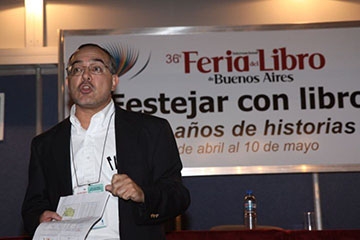Blogroll
Topics

As Fall term came to a close in 1965, Stanford received good news: the Ford Foundation had approved a grant proposal to establish a new program "for training and research in Latin American Studies…" (1) The three-year grant for $550,000 included an allocation of $75,000 for "library improvement." (2) Thus began the Center for Latin American Studies, "The Center," as we know it today.
The Ford Foundation proposal built on Stanford’s strengths dating back to the presidency of John Casper Branner on the eve of World War I. In fact, the Proquest Dissertations & Theses Global database registers the first Stanford doctoral dissertation with a Latin American theme in 1935. The WorldCat Dissertations database also lists an additional 92 master thesis on various Latin American and Iberian topics up to that period.
Branner on the eve of World War I. In fact, the Proquest Dissertations & Theses Global database registers the first Stanford doctoral dissertation with a Latin American theme in 1935. The WorldCat Dissertations database also lists an additional 92 master thesis on various Latin American and Iberian topics up to that period.
The grant highlighted the Library as an integral part of the Center. The first Committee on Latin American Studies established by then University President J. E. Wallace Sterling included Pamela Dampsey from Green Library. In 1968 Jim Breedlove was recruited from the University of Texas at Austin to become the Curator for Latin American & Iberian Collections and would serve in that capacity for the next 25 years. The Curator’s participation in the Center extended beyond collection building, and included teaching a graduate seminar on research methods for the Master’s program in Latin American Studies.
 Upon Breedlove’s retirement in 1993, a position was created merging International Government Publications and Latin American Collections with Roberto Trujillo as Curator for Latin American, Mexican American and Iberian Collections. Since 1997 Trujillo, as Director of Special Collections, has particularly supported acquisition of rare, unique and ephemeral materials from/about Latin America like the Fernando Alegria, Lahuerhass Braziliana, Mexican Movie Posters, José Guadalupe Posada and the Taller de Gráfica Popular collections.
Upon Breedlove’s retirement in 1993, a position was created merging International Government Publications and Latin American Collections with Roberto Trujillo as Curator for Latin American, Mexican American and Iberian Collections. Since 1997 Trujillo, as Director of Special Collections, has particularly supported acquisition of rare, unique and ephemeral materials from/about Latin America like the Fernando Alegria, Lahuerhass Braziliana, Mexican Movie Posters, José Guadalupe Posada and the Taller de Gráfica Popular collections.
From its beginnings 50 years ago, the Center has provided funding for library acquisitions and continues to do so. Recent book-buying trips have been noted in blog postings by Adan Griego, Curator for Latin American Studies since 1997:
- Bogota: 2009, 2013 and 2015
- Buenos Aires: 2009, 2010 and 2015,
- Guadalajara: 2009, 2012, 2013, and 2014
Stanford’s holdings on Brazil are one of the most comprehensive in North America and those strengths are reflected in doctoral research: of the 365 dissertations written at Stanford since 1965, almost 20% have focused on various aspects of Brazilian culture. The other country of intense research has been Mexico with 80 doctoral dissertations during the same 50 year period .
.
Collectively, the Latin American holdings at Stanford represent one of the most dynamic library collections in the country, adding approximately 9,000 print volumes per year, with a growing offer of electronic resources that include bibliographic and image databases. The overall print and digital holdings reflect this transition.
Stanford's vast research collections have also been noted in the Center’s successful awards as a National Research Center from the Department of Education’s Title VI funding since the 1980s. This constantly growing collection serves the Center’s MA program and the teaching/research needs of the more than 50 campus-wide faculty, as well as many visiting scholars from throughout Latin America.
Notes
1) Proposal to the Ford Foundation for Support of Latin American Studies at Stanford University, 1964.
2) Ibid.
Many thanks to the Special Collections and University Archives staff for their help in locating and retrieving materials.


 Stanford University Home
Stanford University Home